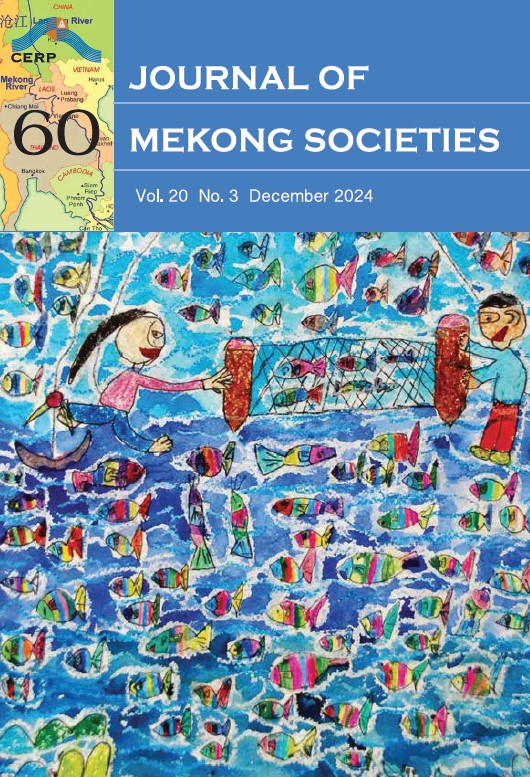A Conceptual Framework and Website Design for Promoting Cultural Tourism in Kalasin Province for Travelers Using Big Bikes
Main Article Content
Abstract
Motorcycle tourism is considered a source of high-value tourists, as this group is willing to pay a premium for their unique experiences. This premium provides the benefit of increased income for the local economy. However, compared to mass tourism, there is a lack of information for motorcycle tourists that is specific to their lifestyle and needs. Moreover, there is no conceptual framework or official website about tourist information, accommodations, and facilities for motorcycle tourism in Thailand. Therefore, this study aims to propose a framework, and to create and evaluate a big bike cultural tourism website of Kalasin province. Three sub-studies with different methods were applied. First, four experts and 18 big bike tourists were interviewed to identify guidelines that would help to create a website. Next, the website, www.kalasin.city, was created from the users’ needs. Finally, the website was evaluated for four main factors (user experience (UX), user interface (UI), content, and desirability), and the conceptual framework was proposed. The findings indicate that UX received an average mean score of 4.47 (satisfied); UI, 4.47 (satisfied); content, 4.48 (satisfied); and desirability, 4.54 (very satisfied)-meaning that big bike users are motivated to travel in Kalasin province.
Article Details

This work is licensed under a Creative Commons Attribution-NonCommercial-NoDerivatives 4.0 International License.
References
Broughton, P. and Walker, L. (2016). Motorcycling and leisure: Understanding the recreational PTW rider. London: CRC Press.
Cater, C. I. (2017). Tourism on two wheels: Patterns of motorcycle leisure in Wales. Tourism Management, 61, 180-189.
Colarič-Jakše, L. M. and Ambrož, M. (2015). Motorcyclist-tourist’s corporeal and spiritual experiences. Mediterranean Journal of Social Sciences, 6(3 S2), 358-366.
Duong Thi Hien and Tran Duc Thanh. (2022). Conflicts between residents and other stakeholders at community-based tourism destinations: A case study of Pu Luong natural reserve, Vietnam. Journal of Mekong Societies, 18(3), 43-63.
Frash Jr., R. E. and Blose, J. E. (2022). Investigating flow in motorcycle tourism: A review of previous research and identification of opportunities. Zeitschrift für Tourismuswissenschaft, 14(3), 263-282.
Gupta, V. and Duggal, S. (2021). How the consumer’s attitude and behavioural intentions are influenced: A case of online food delivery applications in India. International Journal of Culture, Tourism and Hospitality Research, 15(1), 77-93.
Iamtrakul, P. and Chayphong, S. (2019). The study on impact of road safety by considering motorcycle rental behavior of foreign tourists in Chiang Mai. University of the Thai Chamber of Commerce Journal Humanities and Social Sciences, 39(2), 1-1
Kasemsarn, K. (2022). Creating a cultural youth tourism e-book guidelines with four design factors. International Journal of Visual Design, 16(2), 31-51.
Kasemsarn, K. (2024). Applying classic literature to facilitate cultural heritage tourism for youth through multimedia e-book. Heritage, 7(9), 5148-5173.
Kasemsarn, K., Mungkornwong, K., Patcharawit, K., and Sumthumpruek, A. (2023). What information content do students want from a postgraduate design course website? A case study applied to user-centered design. International Journal of Visual Design, 17(1), 17-41.
Konstantakis, M. and Caridakis, G. (2020). Adding culture to UX: UX research methodologies and applications in cultural heritage. Journal on Computing and Cultural Heritage (JOCCH), 13(1), 1-17.
Lee, J. W. and Brahmasrene, T. (2013). Investigating the influence of tourism on economic growth and carbon emissions: Evidence from panel analysis of the European Union. Tourism Management, 38, 69-76.
Luna-Nevarez, C. and Hyman, M. R. (2012). Common practices in destination website design. Journal of Destination Marketing & Management, 1(1-2), 94-106.
McGinley, C. G. (2012). Supporting people-centred design through information and empathy. Ph.D. Dissertation, Department of Design, Brunel University, Uxbridge, UK.
Ramoa, C. E. A., Pires, P. S., and Añaña, E. S. (2021). Motorcycle tourism and nature: An analysis of motorcyclists’ motivations to travel. Leisure Studies, 40(3), 407-423.
Reangvaranont, M. (2019). Factors affecting the decision to buy a big bike motorcycle of Thai people in Phuket. Journal of International Studies, Prince of Songkla University, 9(1), 209-237.
Rovinelli, R. J. and Hambleton, R. K. (1976). On the use of content specialists in the assessment of criterion-referenced test item validity. Washington, DC: Educational Resources Information Center (ERIC).
Ryan, G. W. and Bernard, H. R. (2000). Data management and analysis methods. Handbook of qualitative research. Thousand Oaks, CA: Sage.
Shih, H. Y. (2006). Network characteristics of drive tourism destinations: An application of network analysis in tourism. Tourism Management, 27(5), 1029-1039.
Surapiyawong, P. and Kasemsarn, K. (2024). Mobile application of local Baba-Peranakan food tourism for generation Y: A case study of Phuket province, Thailand. Journal of Mekong Societies, 20(2), 101-130.
Sykes, D. and Kelly, K. (2016). Motorcycle drive tourism leading to rural tourism opportunities. Tourism Economics, 22(3), 543-557
Tongsubanan, S. and Kasemsarn, K. (2024). Developing a design guideline for a user-friendly home energy-saving application that aligns with user-centered design (UCD) principles. International Journal of Human-Computer Interaction, 1-23.
Ubam, E., Hipiny, I., and Ujir, H. (2021, October). User interface/user experience (UI/UX) analysis and design of mobile banking app for senior citizens: A case study in Sarawak, Malaysia. In 2021 International Conference on Electrical Engineering and Informatics (ICEEI). (pp. 1-6). Kuala Terengganu, Malaysia: IEEE.
Walker, L. (2010). Tourism and leisure motorcycle riding. In Prideaux, B. and Carson, D.(Eds), Drive Tourism: Trends and Emerging Markets. (pp. 146-158). Routledge, New York, NY.
Weichbroth, P. (2020). Usability of mobile applications: A systematic literature study. Ieee Access, 8, 55563-55577.
World Tourism Organization UNWTO. (2019). UNWTO tourism highlights: 2018 edition. Madrid: UNWTO.
Yamane, Taro. (1967). Elementary sampling theory. Englewood Cliffs, NJ: Prentice Hall.
Websites
Interaction Design Foundation. (2021). Interaction Design Foundation. Retrieved October 1, 2023, from www.interaction-design.org
Kalasin Provincial Development Plan. (2023). Provincial development strategy and information, Kalasin province 2023-2027. Retrieved October 15, 2023 from https://shorturl.asia/pHiKv
Thai Transportation Statistics Group (2021). Transport statistics group, planning division, department of land transport. Retrieved October 1, 2023 from https://web.dlt.go.th/statistics/


